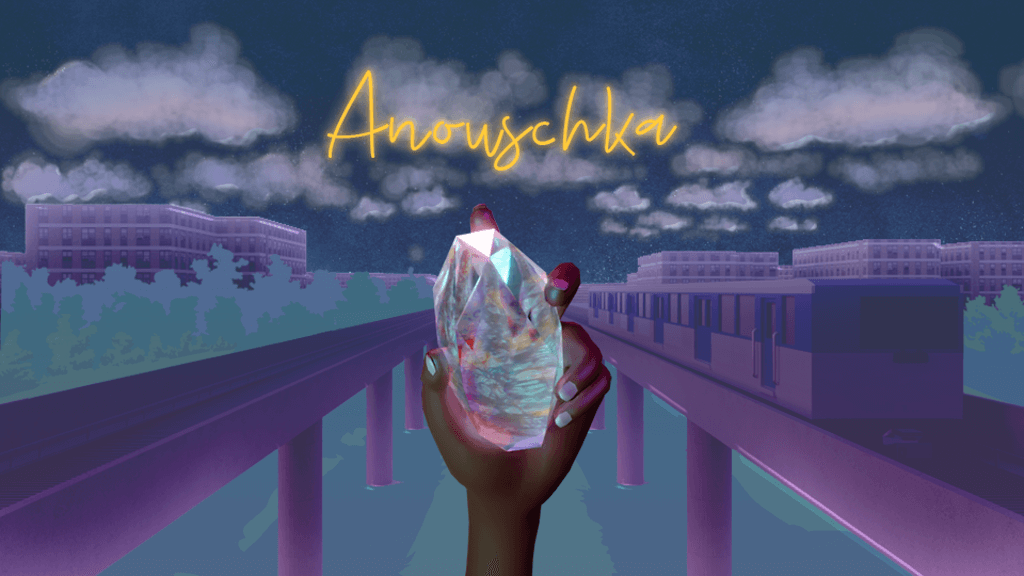“Today, Black female filmmakers still don’t have the same opportunities,” Tamara Shogaolu, the founder of Ado Ato Pictures, spoke candidly in an interview with ARPost. While busy with her upcoming Black-led extended reality film, Anouschka, she took a moment to speak to us about the hard truths of being a woman of color in tech.
Shogaolu has been in the industry for over a decade, with works displayed on TV, MoMa, and Tribeca Film Festival. As a new media artist, she has been pushing the boundaries of traditional storytelling, using extended reality. Despite her achievements, many continue to question and gaslight her successes as flukes.

Here, we talk about the power and struggle of being a Black woman in XR.
The Truth About Being a Black Woman in Extended Reality
One might think that because extended reality is a new medium, it’s free from the inherent biases that perpetuate in the traditional film industry. However, that isn’t the case.
“As I grew professionally and expanded into working with new and immersive technology like virtual reality and augmented reality, I saw many of these same tropes being used to shape the new medium,” Shogaolu says.
Women in XR are at an inherent disadvantage. Since bias is deeply ingrained in the industry’s foundation, those who benefit from it are often unable to see the problem.
Shogaolu’s journey hasn’t been easy, to say the least. However, it has been full of many learning experiences from female mentors. She calls them her “godmothers.” They showed her how to protect herself legally. They taught her how to navigate the ever-changing industry while protecting her ideas from being exploited.
She says she’s also fortunate to have met many Black and Brown women in immersive tech. They, too, have empowered her in her journey in XR.
“These women have taught me about how endless the possibilities are for us, that we will break those barriers, and it’s such a beautiful thing to see and be part of,” says Shogaolu.
Anouschka, an interactive coming-of-age story about a Black teenager from Amsterdam, is Shogaolu’s response to the existing inequalities in XR. She’s directing it, with Elinor T. Vanderburg and Sandy Bosmans as writers. In addition, Jamari Perry and Riyad Alnwili are producing it.
Launching the film’s Kickstarter campaign levels the playing field, she said. It helps her push the boundaries of a male-dominated industry.
Black Girl Magic Ethos in Extended Reality
The XR film is derived from the Black Girl Magic ethos. Plagued by a generational curse, the protagonist Amara embarks on a journey through time to save her twin brother and grandmother.
Along the way, she discovers her ancestry and her family’s magical powers. Eventually, she reconnects with the generations of women who preceded her. In understanding the past, she learns more about her present.
Shogaolu will be directing the story within a room—the physical space where the story unfolds. She will be using Ado Ato Pictures’ Bemmbé Interactive platform to create unique and meaningful experiences.
“Exploring the endless possibilities of the imaginary has always been of special interest to us. This passion for storytelling drove us to create Bemmbé Interactive,” she says.
Bemmbé Interactive is an audio-driven platform, which uses multi-sensory technologies for immersive storytelling. They can modify the platform to fit different narratives. They can also customize it to fit different audience sizes and physical spaces.
“We like to describe this form of experience as a story room or a magic box,” Shogaolu says. “The most important aspect of the technology is the use of immersive, 3D audio that will create a tangible yet magical aural landscape. We want users to live the story, rather than just observe it.”

She doesn’t see the immersive experience as VR because it unfolds without the need for headsets. Instead of holograms, they’ll use wall projections, voice recognition, and motion sensors to create interactivity and engagement in a highly stylized space.
Viewers have the power not only to explore but also to interact and participate in the narrative. Also, they get to bond with the characters in Anouschka.
Breaking Glass Ceilings in Film and Tech With Extended Reality
“I’m passionate about telling stories that start conversations — and hopefully, they make some form of change in the world around us,” Shogaolu explains.
Film and media help shape our concerns, beliefs, and perceptions of the world. To put a stop to cultural misrepresentations and harmful gender stereotypes, all filmmakers must carve a space for women, as well as filmmakers of color. Only when they reclaim their narratives will we start to see gender roles and cultures portrayed in the right light.
Shogaolu hopes Anoushka can help shatter glass ceilings in any industry. By breathing life to characters that Black girls can identify with, she wants to inspire them to pursue their dreams.
“Oftentimes, people think socially impactful storytelling is boring,” says Shogaolu. “But it doesn’t have to be.”
The power of extended reality lies in its ability to take audiences on a magical journey alongside the protagonist. By giving them the ability to explore, interact, and participate in the narratives, socially impactful storytelling will be far from boring. Perhaps XR can even make storytelling more transformative and influential than ever before.
Launched on August 8, you can now support the film’s Kickstarter campaign and help Shogaolu bring Anouschka to life.




